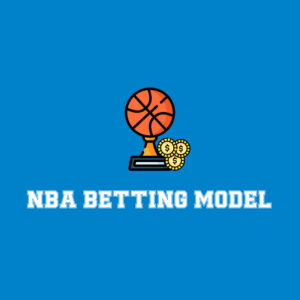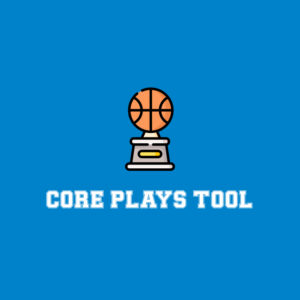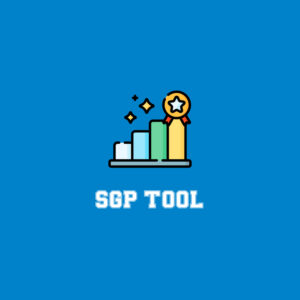
Welcome to K Town
2025 MLB Counter: 28.8% of games played
As all fantasy baseball managers surely know, strikeouts in baseball are referred to as “K’s” because the letter “S” was already used to indicate a sacrifice. Henry Chadwick, the inventor of the box score, began using “K” in the 1860s to represent strikeouts (my daughter says that I was at that game, but she’s just sassing me — seriously, don’t believe her, my first game was not until 1904). Anyway, according to observers (remember, I wasn’t there at the time) Chadwick chose “K” because it is the last letter in the word “struck,” which was a common term for a strikeout at the time.
Strikeouts — as you can see in the second column of the first chart below — were at 8.25 per game in the peak year for offense (2017). Then MLB made it more difficult to hit homers by changing the baseball, but perhaps didn’t expect the jump in strikeout rates — all the way up to 8.81 per game in 2019. From there, we’ve had a gradual but persistent decline through 2024, when it settled at 8.48 per game. However, this season strikeouts have fallen even further — down to 8.26 per game — virtually the same as 2017. Along with that decline in the first part of 2025, unintentional walks have spiked (perhaps as the umpires are trying to prepare for an automatic strike zone which could be in effect next year?). In any case, the walk rate is now 3.32 so far in 2025 — higher than any year since the COVID-19 year of 2020. So with pitchers giving out free passes like candy (you can see the reaction of the average major league batter below) and strikeouts falling, does that mean that Main Event managers are having difficulty recording strikeouts in 2025?
MLB WHIP/Strikeout/Walk Rates 2019-2025 YTD
| Pitching Stats | WHIP | Strikeouts Per Game | Unintentional Walks Per Game |
| 2025 YTD | 1.30 | 8.26 | 3.32 |
| 2024 | 1.27 | 8.48 | 3.07 |
| 2023 | 1.32 | 8.61 | 3.16 |
| 2022 | 1.27 | 8.40 | 3.06 |
| 2021 | 1.30 | 8.68 | 3.25 |
| 2020 | 1.33 | 8.68 | 3.39 |
| 2019 | 1.33 | 8.81 | 3.27 |
| 2018 | 1.30 | 8.48 | 3.32 |
| 2017 | 1.34 | 8.25 | 3.26 |
Over the years, the Main Event 80% mark — usually cited as the bar needed to compete in the overall championship — has been approximately 1400 strikeouts per season (see second chart below). The 80% mark in 2025 is looking like it will be in that neighborhood again. But the takeaway for me is that the 80% Main Event level strikeouts is up 2.5% while the overall MLB level is down 2.5%. So Main Event managers are outperforming by 5%, which is a fairly significant margin. (I knew it was a savvy group of managers!) While we may not end up at 1,416 for the 80% Main Event mark this season, it certainly seems that more strikeouts are required to compete in 2025. The current number of strikeouts needed to be at the 80% target is 378 as of Thursday, May 15. If you’re well short of that level, perhaps starting pitching should be a focus in the coming months.
Main Event 80% Strikeouts 2019-2025 YTD
| Strikeouts | 80% Level: Main Event | Strikeouts Per Game |
| 2025 PROJ | 1,416 | 8.26 |
| 2024 | 1,381 | 8.48 |
| 2023 | 1,406 | 8.61 |
| 2022 | 1,347 | 8.40 |
| 2021 | 1,389 | 8.68 |
| 2019 | 1,476 | 8.81 |
Leading the K Parade
This is a chart of the most of the top 22 strikeout producers through Sunday, May 18, along with their ADP in the Main Event in March 2025. The chart shows there are seven pitchers — led by MacKenzie Gore — who have registered at least 70 strikeouts. Gore and Carlos Rodón were the only two that were not drafted in the first 40 selections. In addition, though, there are 17 more pitchers in the chart below who have accomplished at least 57 punch outs — and even these top 22 only have seven taken on average after pick 100 (and only Max Meyer was drafted after pick 200). So it seems if you wanted strikeouts, you needed to get them early. These 22 players account for 1,443 strikeouts through Sunday, which is roughly 13% of the MLB total, making it tough for those managers who missed on all of these hurlers to compete in this category.
Top Strikeout Artists Drafted in the Main Event by ADP
| K | Player | ADP |
| 84 | MacKenzie Gore | 183 |
| 80 | Zack Wheeler | 22 |
| 73 | Garrett Crochet | 18 |
| 72 | Chris Sale | 30 |
| 72 | Carlos Rodón | 134 |
| 72 | Cole Ragans (IL) | 40 |
| 71 | Tarik Skubal | 12 |
| 69 | Logan Webb | 91 |
| 67 | Hunter Brown | 94 |
| 65 | Nathan Eovaldi | 190 |
| 64 | Michael King | 62 |
| 63 | Joe Ryan | 89 |
| 62 | Paul Skenes | 10 |
| 61 | Hunter Greene (IL) | 91 |
| 60 | Max Fried | 95 |
| 59 | Framber Valdez | 61 |
| 59 | Yoshinobu Yamamoto | 55 |
| 59 | Zac Gallen | 114 |
| 59 | Max Meyer | 292 |
| 58 | Dylan Cease | 44 |
| 57 | Freddy Peralta | 103 |
| 57 | Jesús Luzardo | 194 |
Most Common FAAB Pickups in the Main Event: No Hating for Clayton
Main Event Most Added Players
The top-10 FAAB acquisitions from Sunday are in the chart below, and Dodgers veteran Clayton Kershaw, who returned from injury this week, was the most added player in the Main Event Sunday. Main Event managers were not put off by his slightly rocky season debut, as he was added in all 57 leagues for an average price of $65. Kershaw is slated to start against the Mets in New York next week, and the Dodgers (and his fantasy managers) are hoping he hits his stride. The second-most added player was Will Benson, who homered in three consecutive games and is forcing his way into the Reds lineup. If he keeps on hitting, Benson might carve out a regular role even after Jake Fraley returns to the active roster. Slade Cecconi was the third-most added player, as the Cleveland starter pitched beautifully Saturday — recording 8 strikeouts in just 5 innings of work. Cecconi will draw the Tigers in Detroit in the coming week. Finally, Matthew Lugo of the Angels was the fourth-most added player due to his hot bat — as his new fantasy managers are hoping he becomes a regular Angel in the Outfield. Nevertheless, Ryan Weathers was the big prize — he had the highest average winning bid of $203 out of the top ten — as all the other average winning bids were well below $100.
| Player | Leagues Added | Highest Winning Bid | Average Winning Bid | Reason |
| Clayton Kershaw | 57 | $225 | $65 | LAD has their ace again |
| Will Benson | 56 | $130 | $49 | 7-for-15 w/3 HR this week |
| Slade Cecconi | 53 | $89 | $42 | Gets at DET this week |
| Matthew Lugo | 48 | $41 | $19 | 6-for-16 w/2 HR this week |
| Noah Cameron | 43 | $90 | $46 | 2 wins & 3.80 ERA so far |
| Dalton Rushing | 42 | $201 | $54 | 4-for-10 in his first 3 games |
| Alexander Canario | 39 | $46 | $14 | PT in PIT |
| J.T. Ginn | 37 | $52 | $28 | 2 starts this week: LAA & PHI |
| Ryan Weathers | 36 | $303 | $203 | Goes 5 good IP in debut |
| Ryne Nelson | 36 | $45 | $29 | Inserted in rotation this week |
Top Additions Based on Total FAAB Dollars Spent This Week
We’ve added a new feature — the top 10 acquisitions in the Main Event based on the total FAAB dollars spent. Obviously, this chart can highlight players that attract a higher average winning bid even though they were picked up in fewer leagues. Unsurprisingly, Ryan Weathers was far and away the leader here, with $7,321 spent on his services, with Clayton Kershaw a notable second at $3,685. This week Hayden Birdsong and Jordan Romano were the only two players who made this second list without being added in the most leagues, despite being available in only nine and five leagues, respectively. The average winning bid was $175 for Birdsong and $225 for Romano, as they were considered very hot commodities.
| Player | Leagues Added | Total Amount Spent | Reason |
| Ryan Weathers | 36 | $7,321 | Goes 5 good IP in debut |
| Clayton Kershaw | 57 | $3,685 | LAD has their ace again |
| Will Benson | 56 | $2,754 | 7-for-15 w/3 HR this week |
| Dalton Rushing | 42 | $2,273 | 4-for-10 in his first 3 games |
| Slade Cecconi | 53 | $2,201 | Gets at DET this week |
| Noah Cameron | 43 | $1,959 | 2 wins & 3.80 ERA so far |
| Hayden Birdsong | 9 | $1,571 | Entering SF rotation this week |
| Drake Baldwin (tie) | 34 | $1,551 | Making the most of limited PT |
| Jordan Lawlar (tie) | 32 | $1,551 | Great talent; will he get AB? |
| Jordan Romano | 5 | $1,132 | Primary closer w/Alvarado out? |
The Wow Bid of the Week: All Roads Lead to Romano
So who attracted the highest single bids of Week 7 FAAB? Of course this week it had to be Jordan Romano of the Phillies at a $312 figure (which handily beat the runner-up bid of $176). Romano’s five winning prices ranged from this top bid to two between $200-299; and two more between $100-199; and the lowest successful bid was $176.
In addition to the Weathers, Birdsong and Romano, there were five other players with average winning bids over $100 that were added in one to four leagues: Zebby Matthews ($205; 1 league), Michael Toglia ($128; 1), Spencer Steer ($127; 1), Logan Henderson ($124; 4) and Luis Severino ($121; 1).
FAAB Summary: $498 Spent; $502 Remains
Well, for the average Main Event manager, about half of their FAAB allocation is gone (poof!) one-third of the way through our 27 FAAB weeks. In the first nine FAAB weeks, Main Event managers have recorded 14,793 winning bids (virtually identical to the 14,706 in the first nine weeks of last year). This means that the average Main Event team has placed about 17 total winning bids this season and spent about $498 of their $1,000 allocation on those 17 winning bids. Spending is up about 8% over last year’s total of $460 in the first nine weeks, and the average Main Event winning bid was a still-healthy $29 (well above the average winning bid of $20 in this same period last season). The average Main Event manager in total spent a fairly sizable $59 — which will inevitably move lower as resources dwindle. As of May 18, the $498 spent represents about $55 per week, and the $502 remaining leaves Main Event owners with approximately $28 per week over the final 18 weeks of the season.
| 2025 FAAB Week | Total # of Winning Bids | Total FAAB $ Spent | Average Winning Bid | Average Amount Spent (per team) | Cumulative FAAB Spent (per team) |
| 9 | 1,745 | $50,378 | $29 | $59 | $498 |
The Colosseum: Two Thumbs Up; Two Thumbs Down
Each week during the season, I’ll review the most common Main Event pickups from three weeks ago and evaluate whether it was a good addition based on the early stats (thumbs up); a bad idea (thumbs down); or simply a push. In 2024, these pickups were rated as 30 thumbs up (38%), a little worse than in 2023 (44% up).
Our sixth set of Colosseum combatants is listed below. This group is from April 27, and the top hitter addition that week — Jordan Beck of the Rockies — has accumulated some solid stats (15 runs scored!) along with a good batting average to easily earn the emperor’s thumbs up. The next two hitters were tougher decisions though — as both Agustín Ramírez and Nick Kurtz have done fairly well but fell a little short of the counting stats needed to really help their owners thus far (a low batting average and relatively depressed counting stats). Both are still playing regularly and showing signs of contributing, so they earn pushes for the first three weeks.
On the pitching side, we had two starting pitchers along with one reliever as the major additions. The most added pitcher — Emerson Hancock of Seattle — has had his chances but been disappointing — with an ERA of 5.40 and a WHIP of 1.66. That earned him a thumbs down from the emperor. Jesús Tinoco of the Marlins also has a rather lackluster ERA, but his WHIP is fine and he has added two saves (and it seems like he may be the primary closer in Miami) — this earned a thumbs up. Finally, Ben Casparius of the Dodgers has done some good work when he’s been on the mound, but Los Angeles apparently wants him in a one-inning bullpen role, which sorely limits his fantasy appeal. That’s a disappointing result for the Main Event crowd. The final tally is two up, two pushes and two down, and makes the cumulative score 14 up, 7 pushes and 15 down after four weeks (39% thumbs up).
The Most Added Free Agents from 3 Weeks Ago: Hitters
| FAAB Date | Player | League Adds | Last Three Weeks: Key Stats | Emperor Decision |
| 4/27 | Jordan Beck | 53 | 75 AB; 15 R; 3 HR; 6 RBI; 1 SB; .267 AVG | UP |
| 4/27 | Agustín Ramírez | 52 | 63 AB; 6 R; 2 HR; 6 RBI; 0 SB; .206 AVG | PUSH |
| 4/27 | Nick Kurtz | 47 | 57 AB; 6 R; 1 HR; 3 RBI; 0 SB; .211 AVG | PUSH |
The Most Added Free Agents from 3 Weeks Ago: Pitchers
| FAAB Date | Player | League Adds | Last Three Weeks: Key Stats | Emperor Decision |
| 4/27 | Emerson Hancock | 44 | 21.2 IP; 0 W; 14 K; 5.40 ERA; 1.66 WHIP | DOWN |
| 4/27 | Jesús Tinoco | 41 | 7.2 IP; 1 W; 8 K; 2 SV; 5.87 ERA; 1.17 WHIP | UP |
| 4/27 | Ben Casparius | 40 | 8.2 IP; 1 W; 8 K; 4.15 ERA; 1.38 WHIP | DOWN |
Overall Leaderboard: The @ Signs Rule!
The Main Event leaderboard is littered with symbols. This new trend, which is all the rage in NFBC land, has taken hold of Main Event entrants as they seek the good luck that it apparently brings. In first place is the well-known @thefanaddict (a tag team of Brian Ambos and Adam Ronis), who were in fifth place last week and actually led on April 27. They have re-assumed their (according to them at least) rightful place on top of the standings. Todd Hoppe took a small breather after hopping from 21st to first place this week, as he fell back to second overall. He still is in fine shape. In the lofty position of third overall, Kyle Brinkmann is in position to get to the top, but the big news is that he only has one team currently in the top 34 (last week he had three teams listed). But there are other contenders who aren’t giving up — in fourth place is @nlsharks patrolling the nearby waters, and our previous leader — the Kid Ben Tidd — is acting quite mature for his age in fifth. In sixth place is @SaucyMittenz — who according to news reports wears mittens because of their tendency to get a little messy when they make tomato sauce for their pasta.
The top 34 Main Event entrants will earn a prize from the overall pool this year in addition to any league prizes awarded, and other notables include Ross (the Iceberg) Berg in seventh, Mr. Stats Jon Stadtmueller in eighth, John Lymberis in ninth, and the dangerous Andrew Geller (Da Gildz) in tenth. Also worth mentioning is former overall champion (gulp) John Pausma in 11th and 25th, FTN fantasy bullpen expert Dan Thompson in 16th, FTN football expert Nelson Sousa in 31st, and yet another symbol-nameof @raptorman (what is going on with these!) in 32nd.
Even though it’s still early, making the top 34 is a significant accomplishment — and we’ll follow the chase for the Main Event overall crown all season to see who can come out on top.
NFBC Main Event Overall Standings
| Overall Rank | Overall Prize Money | Fantasy Manager |
| 1 | $200,000 | @thefanaddict |
| 2 | $50,000 | Todd Hoppe |
| 3 | $30,000 | Kyle Brinkmann |
| 4 | $25,000 | @nlsharks |
| 5 | $20,000 | Ben Tidd |
| 6 | $15,000 | @SaucyMittenz |
| 7 | $12,500 | Ross Berg |
| 8 | $10,000 | Jon Stadtmueller |
| 9 | $9,000 | John Lymberis |
| 10 | $8,000 | Andrew Geller |
| 11 | $7,500 | John Pausma |
| 12 | $7,000 | Markus Sultan |
| 13 | $6,500 | Christopher Cosley |
| 14 | $6,000 | Gary Durbin |
| 15 | $5,500 | Daniel Semsel |
| 16 | $5,000 | Dan Thompson |
| 17 | $4,000 | Scott Feschuk |
| 18 | $3,500 | Jason Santeiu |
| 19 | $3,000 | Daniel DaSilva |
| 20 | $2,500 | Robert Mirshak |
| 21 | $2,400 | Mike Cameron |
| 22 | $2,300 | Jay Tannehill |
| 23 | $2,200 | Casey Paton |
| 24 | $2,100 | Leonard Ringle |
| 25 | $2,000 | John Pausma |
| 26 | $1,950 | Joe Anthony |
| 27 | $1,900 | Josh Pettersen |
| 28 | $1,850 | Ned Donohue |
| 29 | $1,800 | Zain Dhanani |
| 30 | $1,750 | Johnhenry Schroeder |
| 31 | $1,700 | Nelson Sousa |
| 32 | $1,650 | Dustin McComas |
| 33 | $1,600 | @raptorman |
| 34 | $1,550 | Bradley Libros |
2025 Final Table CLQ & Qualifier Standings
The first chart below shows the first annual CLQ Championship League Standings — these are the 15 fantasy managers who qualified last season by finishing with the best combined score in an across-the-board competition and therefore were invited to compete in an auction league in March. If you’re unaware, the CLQ requires fantasy managers to enter one specified team in the Online Championship, the Draft Champions, and the Main Event. These top 15 in the 2024 CLQ qualified for this first-ever auction league with significant prize money at stake built from entry fees from all CLQ entrants (201 fantasy managers entered this competition in 2024). It’s the best of the best in a no-holds-barred 15-team league, so we’ll track it to see who can become the initial Champions League Champ (the Champs Champ?) — and this week Chris Uram is still leading — he now has 112.0 points — but has four competitors in a jumble right on his tail — second place fantasy manager Toby Guevin at 107.5; third place Neil Peterson (107.0); fourth place Michael Brophy (106.5); and fifth place Tim Sansome (106.0). What a race! Matt Leahy is also not far behind with 94.5 points, and Brody John sits in seventh at 84.5.
Below that, I’m showing here the race for the NFBC CLQ — the Champions League Qualifier for next March. The top 14 in the CLQ qualify for the 2026 Champions auction league (the champion of the 2025 Champions Auction league automatically is invited back to defend their title). You can see the current 14 leading contenders to make the auction table in 2026 out of the 155 intrepid souls who entered this year. Kyle Pantalone is shirtless but still leading, while Matt Poole increased his backstroke laps in order to remain in second place. Aaron Jones, who plays for the Minnesota Vikings in his spare time, moves up to third from fourth, while former Main Event overall champ Bob Catsiroumpas slides to fourth from eighth. My favorite Martin — Gregg Martin — comes from off the leaderboard to qualifying position in fifth, and Spencer Farmery is tending effectively to his crops and in good shape in sixth. But all 14 of these fantasy managers have done an excellent job and have a leg up to be at the final table next March.
Good luck to all the fantasy managers this week — there’s still a long way to go!
2025 Final Table CLQ
| Overall Rank | Fantasy Manager |
| 1 | Chris Uram |
| 2 | Toby Guevin |
| 3 | Neil Petersen |
| 4 | Michael Brophy |
| 5 | Tim Sansome |
| 6 | Matt Leahy |
| 7 | Brody John |
| 8 | Nicholi Knutson |
| 9 | Michael Mager |
| 10 | Mike Ballschmiede |
| 11 | Mark Northan |
| 12 | Jordan Rosenblum |
| 13 | Dustin McComas |
| 14 | Eddie Gillis |
| 15 | Steven Weimer |
Champions League Qualifier Standings
| Overall Rank | Fantasy Manager |
| 1 | Kyle Pantalone |
| 2 | Matt Poole |
| 3 | Aaron Jones |
| 4 | Bob Catsiroumpas |
| 5 | Gregg Martin |
| 6 | Spencer Farmery |
| 7 | Ian Hubbard |
| 8 | Brian Edwards |
| 9 | David Bone |
| 10 | Jason Shook |
| 11 | Timothy Buethe |
| 12 | Michael Thompson |
| 13 | Matt Leahy |
| 14 | Josh Pettersen |








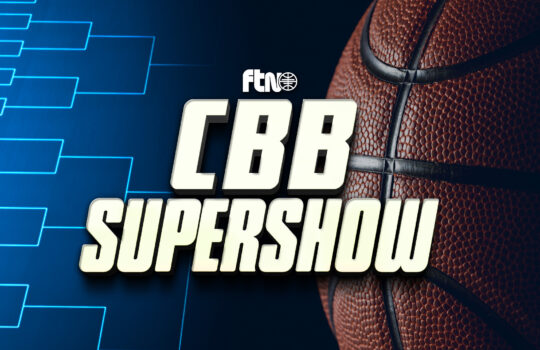













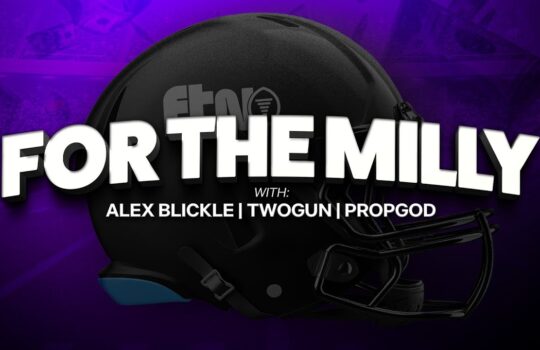






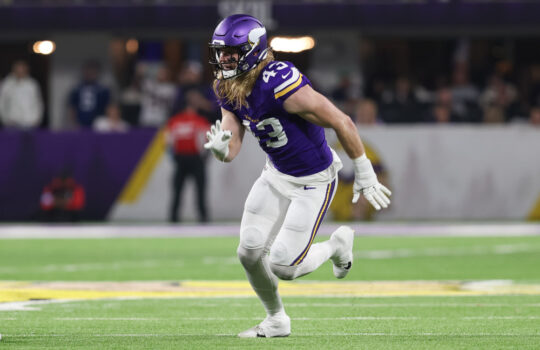



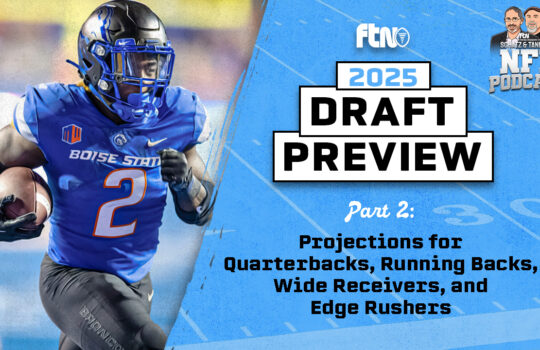

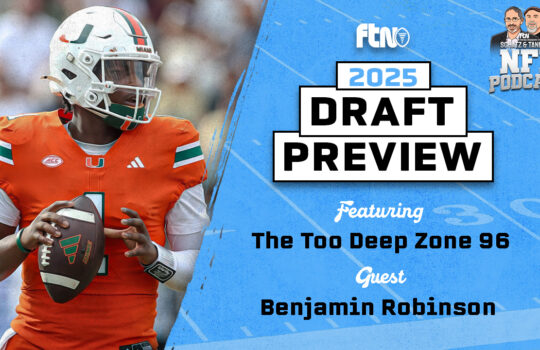
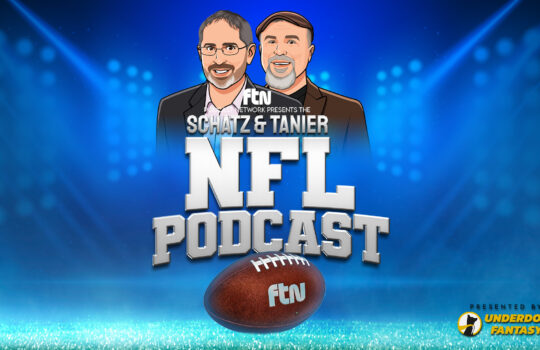




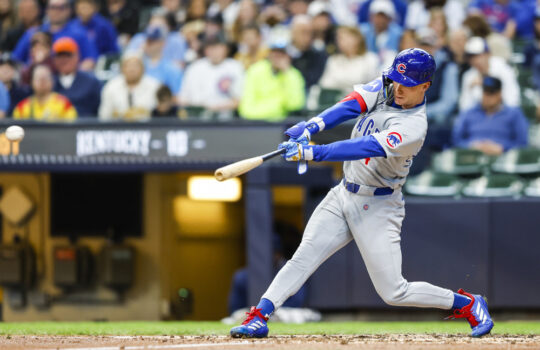

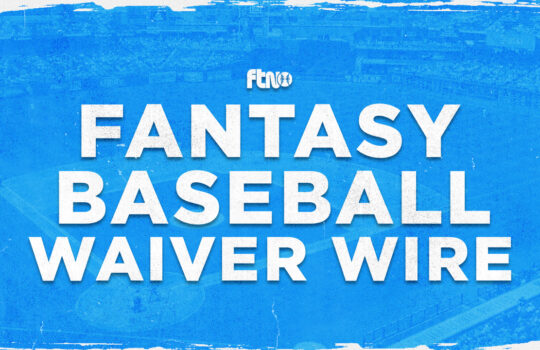

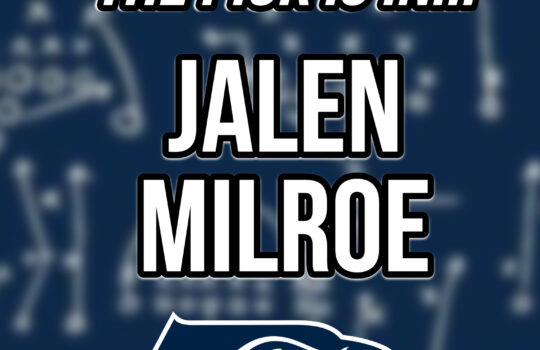

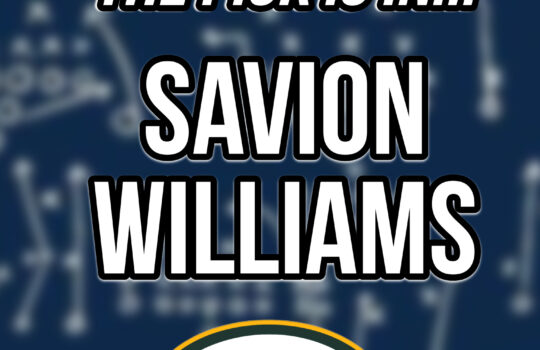
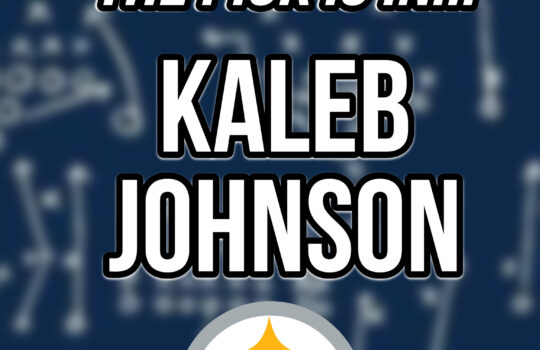

 New York Jets
New York Jets  New England Patriots
New England Patriots 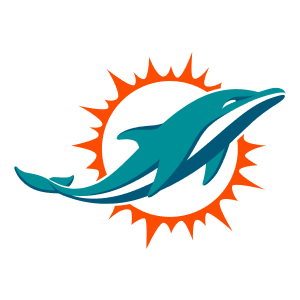 Miami Dolphins
Miami Dolphins  Buffalo Bills
Buffalo Bills  Pittsburgh Steelers
Pittsburgh Steelers  Cleveland Browns
Cleveland Browns  Cincinnati Bengals
Cincinnati Bengals 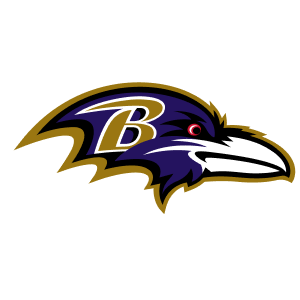 Baltimore Ravens
Baltimore Ravens 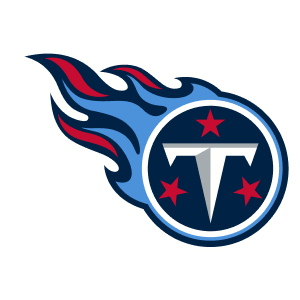 Tennessee Titans
Tennessee Titans  Jacksonville Jaguars
Jacksonville Jaguars  Indianapolis Colts
Indianapolis Colts  Houston Texans
Houston Texans  Las Vegas Raiders
Las Vegas Raiders 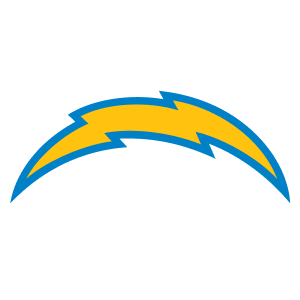 Los Angeles Chargers
Los Angeles Chargers  Kansas City Chiefs
Kansas City Chiefs 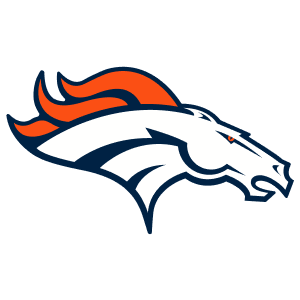 Denver Broncos
Denver Broncos  Washington Commanders
Washington Commanders  Philadelphia Eagles
Philadelphia Eagles 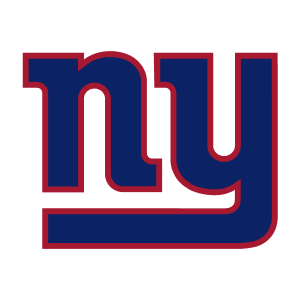 New York Giants
New York Giants  Dallas Cowboys
Dallas Cowboys 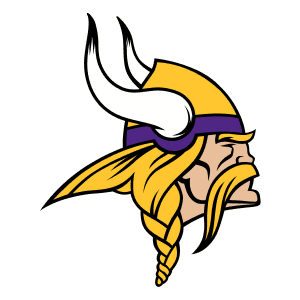 Minnesota Vikings
Minnesota Vikings  Green Bay Packers
Green Bay Packers 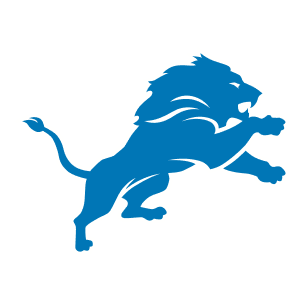 Detroit Lions
Detroit Lions 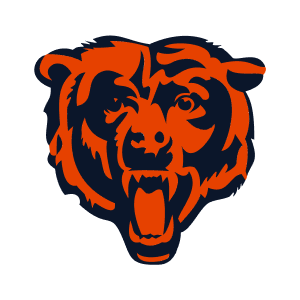 Chicago Bears
Chicago Bears 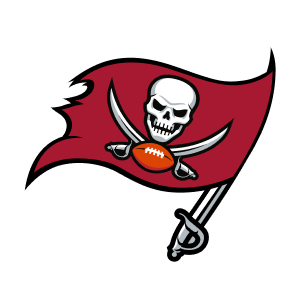 Tampa Bay Buccaneers
Tampa Bay Buccaneers  New Orleans Saints
New Orleans Saints 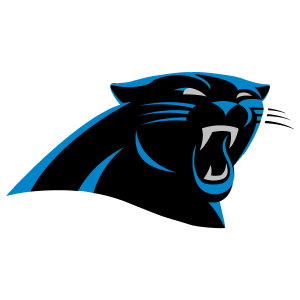 Carolina Panthers
Carolina Panthers 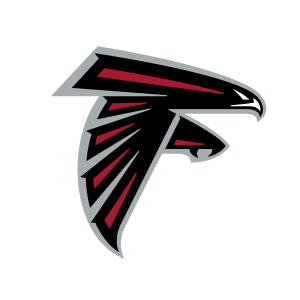 Atlanta Falcons
Atlanta Falcons  San Francisco 49ers
San Francisco 49ers  Seattle Seahawks
Seattle Seahawks  Los Angeles Rams
Los Angeles Rams 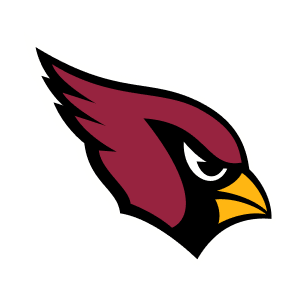 Arizona Cardinals
Arizona Cardinals 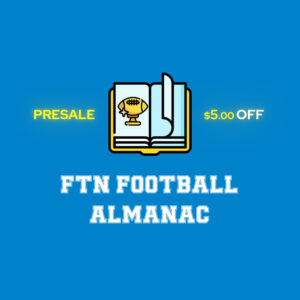
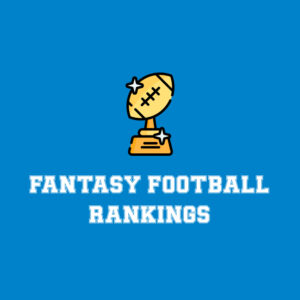
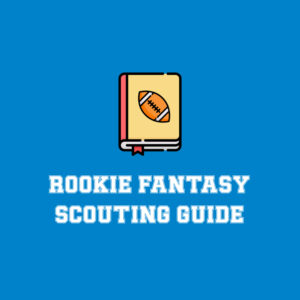
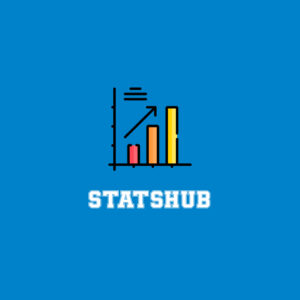
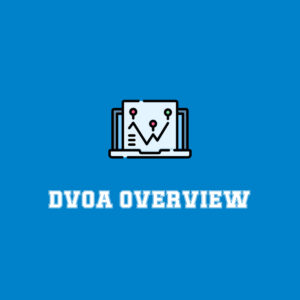




 Boston Celtics
Boston Celtics  Brooklyn Nets
Brooklyn Nets 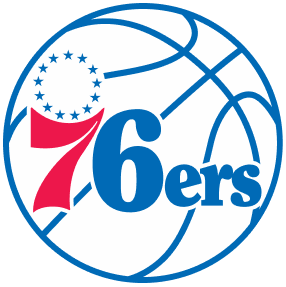 Philadelphia 76ers
Philadelphia 76ers  New York Knicks
New York Knicks  Toronto Raptors
Toronto Raptors  Chicago Bulls
Chicago Bulls  Detroit Pistons
Detroit Pistons  Milwaukee Bucks
Milwaukee Bucks  Cleveland Cavaliers
Cleveland Cavaliers  Indiana Pacers
Indiana Pacers  Orlando Magic
Orlando Magic 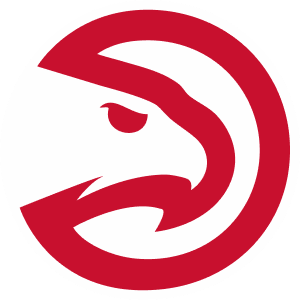 Atlanta Hawks
Atlanta Hawks  Charlotte Hornets
Charlotte Hornets  Miami Heat
Miami Heat  Washington Wizards
Washington Wizards  Denver Nuggets
Denver Nuggets  Minnesota Timberwolves
Minnesota Timberwolves  Oklahoma City Thunder
Oklahoma City Thunder  Portland Trail Blazers
Portland Trail Blazers  Utah Jazz
Utah Jazz  LA Clippers
LA Clippers  Golden State Warriors
Golden State Warriors  Los Angeles Lakers
Los Angeles Lakers  Phoenix Suns
Phoenix Suns  Sacramento Kings
Sacramento Kings  Dallas Mavericks
Dallas Mavericks  Houston Rockets
Houston Rockets  Memphis Grizzlies
Memphis Grizzlies  New Orleans Pelicans
New Orleans Pelicans  San Antonio Spurs
San Antonio Spurs 
